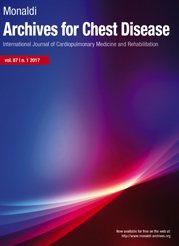Investigation of different field tests in relation to balance, daily living activities, and quality of life in pulmonary hypertension
All claims expressed in this article are solely those of the authors and do not necessarily represent those of their affiliated organizations, or those of the publisher, the editors and the reviewers. Any product that may be evaluated in this article or claim that may be made by its manufacturer is not guaranteed or endorsed by the publisher.
Authors
Assessment of exercise capacity is useful in monitoring patients and planning a rehabilitation program for subjects with pulmonary hypertension (PH). No study has investigated the relationship of different field tests, except for the six-minute walk test (6MWT), with balance, activities of daily living (ADL), and quality of life (QoL) in subjects with PH. This study aimed to investigate the relationship of different field tests with balance, ADL, and QoL in subjects with PH. This study was a prospective cross-sectional study. A total of 27 subjects who were diagnosed as having PH were included in the study. Field tests were the 6MWT, the Incremental Shuttle Walk Test (ISWT), and the Endurance Shuttle Walk Test (ESWT). Balance assessment was performed using the Timed Up and Go Test (TUG). ADL was evaluated using the London Chest Activities of Daily Living Scale, and QoL was evaluated using emPHasis-10. TUG was the significant predictor of 6MWD and ISWT walking distance (ß=-0.590, p=0.001, ß=-0.600, p=0.001). The emPHasis-10 score significantly predicted ESWT time (ß=-0.667, p<0.001). Submaximal and maximal exercise capacity were related to balance in subjects with PH, and lower endurance capacity was related to decreased QoL. This study suggests that submaximal and maximal exercise capacity were related to dynamic balance in subjects with PH, and lower endurance capacity was related to decreased QoL. ISWT can be considered a safe and practical tool to assess maximum exercise capacity.
Ethics approval
The study was approved by the Istanbul University Ethics Committee (number: 2018/285) and conducted by the Helsinki Declaration.How to Cite

This work is licensed under a Creative Commons Attribution-NonCommercial 4.0 International License.






